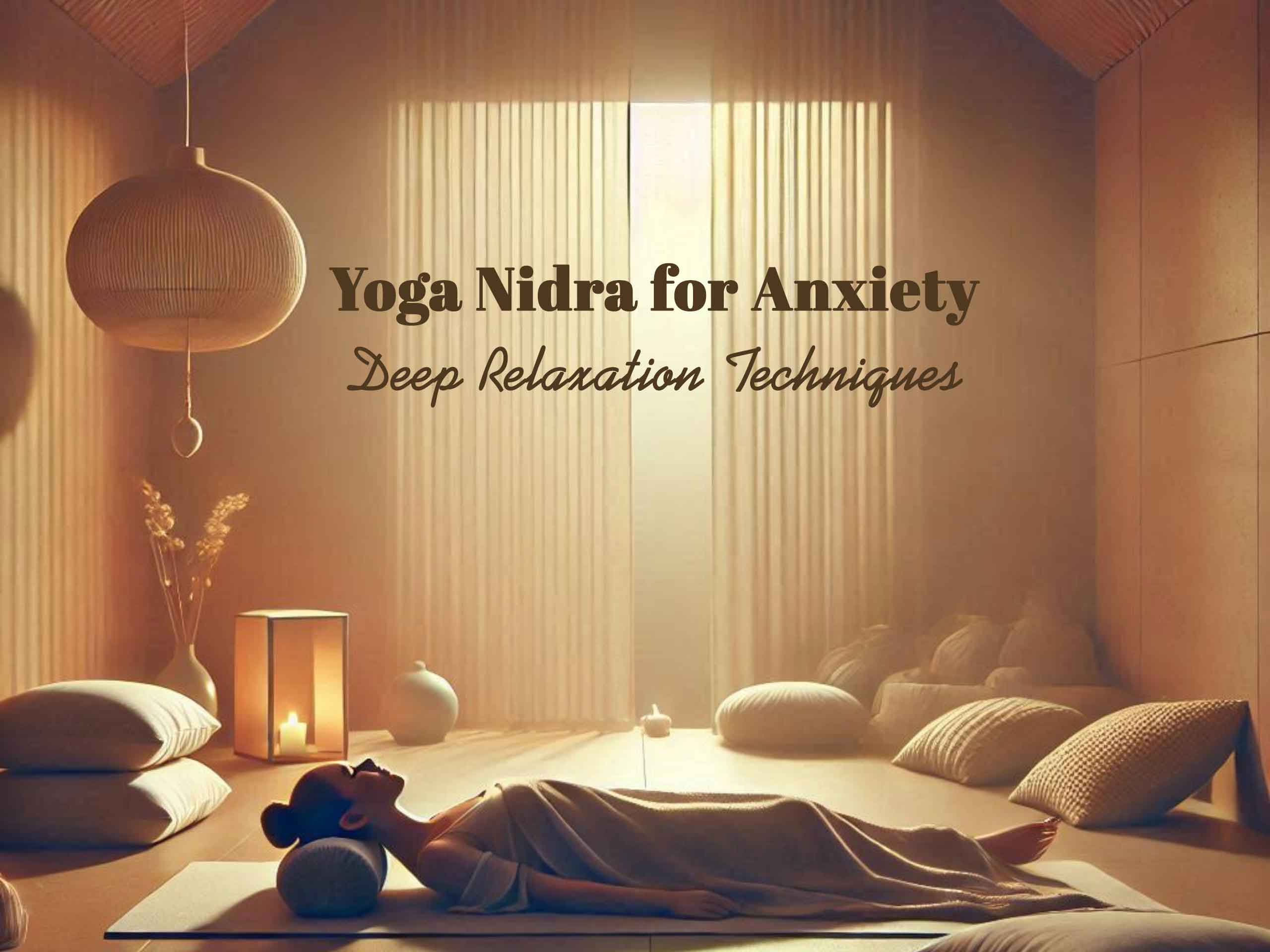Yoga Nidra for Anxiety: Deep Relaxation Techniques

In our fast-paced world, where stress and anxiety are almost daily companions, finding effective methods to manage these feelings is crucial. One such powerful technique is Yoga Nidra, often described as "yogic sleep." Despite its name, Yoga Nidra isn't about falling asleep but rather about entering a state of conscious deep relaxation while maintaining or even enhancing awareness. Here’s how Yoga Nidra can be a transformative practice for those struggling with anxiety.
What is Yoga Nidra?
Yoga Nidra is a guided meditation that promotes total physical, mental, and emotional relaxation. It typically involves lying down in a comfortable position, often in Savasana (Corpse Pose), and following a set of verbal instructions from a guide or recording. The practice leads you through various stages:

- Body Scan (Rotation of Consciousness): Attention is directed to different parts of the body, promoting relaxation and awareness.
- Breath Awareness: Focus shifts to the breath, observing its natural flow without manipulation.
- Feelings and Sensations: Noticing but not reacting to various sensations and emotions.
- Visualization: Engaging in guided imagery, often involving peaceful scenarios or symbols.
- Returning Awareness: Gradually bringing consciousness back to the external world.
Benefits for Anxiety
- Reduction of Stress Hormones:
Yoga Nidra has been shown to decrease cortisol levels, the stress hormone, which can help mitigate the physiological effects of anxiety. - Enhanced Self-Awareness:
By practicing awareness of the body, breath, and mind, individuals learn to observe their anxiety without judgment. This detachment can reduce the intensity of anxious thoughts. - Improved Sleep Quality:
Regular practice can lead to better sleep patterns, which are often disturbed in people with anxiety. Even if not asleep, the deep relaxation can provide rest akin to deep sleep. - Emotional Regulation:
The practice helps in processing emotions in a controlled environment, teaching individuals to manage their responses to stress and anxiety triggers. - Neuroplasticity:
Yoga Nidra can influence the brain’s structure and function, promoting pathways associated with relaxation and reducing those linked with anxiety.
Practical Application for Anxiety
- Daily Practice: Even just 20 minutes daily can significantly impact anxiety levels.
- Customization: Tailor the session to include affirmations that counter specific anxious thoughts or fears.
- Integration with Therapy: Yoga Nidra can complement traditional psychotherapy or cognitive-behavioral therapy by providing a tool for relaxation and introspection.

How to Practice Yoga Nidra at Home
- Find a Quiet Space: Make sure you will not be disturbed. Dim lights and a comfortable temperature are ideal.
- Use a Guided Session: Start with guided recordings by experienced teachers. There are many free resources online or through yoga apps.
- Set Your Intention: Before beginning, think of a positive affirmation related to overcoming anxiety.
- Stay Awake: The challenge in Yoga Nidra is to remain aware; if you fall asleep, that's okay, but try to stay conscious to reap the full benefits.
- Consistency: Like any practice, the benefits of Yoga Nidra grow with regular practice.
Conclusion
Yoga Nidra offers a profound yet accessible approach to managing anxiety. It invites you into a state of deep relaxation where healing and transformation occur, not just on a physical level but emotionally and mentally too. By integrating this practice into your routine, you can foster a more serene mind, better equipped to handle life's stresses. Whether you’re new to yoga or meditation, Yoga Nidra can be a gentle yet powerful addition to your wellness toolkit.
Join our community today and take the first step towards a healthier, more balanced you.
Note: This is for informational purposes only and should not replace professional medical advice. Always consult a healthcare professional before starting any new treatment or session.
Photo: @Freepik, @unsplash @mircosoft designer

